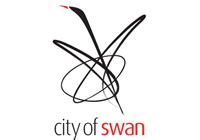Full-time equivalent (FTE) employment is modelled by NIEIR and takes into account differences in hours worked between industry sectors. It is a measure that allows direct comparison of employment between industries in the City of Swan.
Typically, industries such as Retail Trade and Accommodation and Food Services, which employ many part-time workers, have lower FTE employment than total employment.
FTE employment is calculated directly by dividing the total hours worked in each industry by 38. By comparing the number of full-time equivalent jobs in each industry sector to a regional benchmark, you can clearly see the structure of the City of Swan's economy. This can be done by directly comparing the area to its benchmark, or by using a location quotient to look at the relative size of industries.
FTE employment should be viewed in conjunction with Employment by industry (Total) and Employment by industry (Census), for a full understanding of the industry breakdown in the area. Worker productivity data shows the value of a worker in each industry to the local economy. Employment locations shows where employment is taking place in each industry sector.
Data source
National Economics (NIEIR) - Modelled series
Current benchmark:
Comparison year:
| Full-time equivalent employment by industry sector | |||||||||
|---|---|---|---|---|---|---|---|---|---|
| City of Swan | 2022/23 | 2017/18 | Change | ||||||
| Industry | Number | % | Western Australia | Number | % | Western Australia | 2017/18 - 2022/23 | ||
| Agriculture, Forestry and Fishing | 851 | 1.2 | 2.3 | 1,104 | 1.8 | 3.4 | -253 | ||
| Mining | 4,019 | 5.6 | 11.9 | 2,788 | 4.7 | 9.7 | +1,231 | ||
| Manufacturing | 6,371 | 8.9 | 6.7 | 6,957 | 11.6 | 6.6 | -586 | ||
| Electricity, Gas, Water and Waste Services | 742 | 1.0 | 1.4 | 683 | 1.1 | 1.6 | +59 | ||
| Construction | 8,654 | 12.1 | 10.1 | 7,632 | 12.7 | 11.1 | +1,022 | ||
| Wholesale Trade | 4,770 | 6.7 | 3.1 | 3,445 | 5.7 | 3.0 | +1,325 | ||
| Retail Trade | 6,712 | 9.4 | 7.0 | 5,346 | 8.9 | 7.6 | +1,367 | ||
| Accommodation and Food Services | 3,186 | 4.5 | 4.9 | 3,047 | 5.1 | 5.6 | +139 | ||
| Transport, Postal and Warehousing | 7,549 | 10.6 | 5.6 | 4,850 | 8.1 | 5.4 | +2,699 | ||
| Information Media and Telecommunications | 824 | 1.2 | 1.0 | 804 | 1.3 | 1.1 | +20 | ||
| Financial and Insurance Services | 583 | 0.8 | 2.4 | 635 | 1.1 | 2.3 | -52 | ||
| Rental, Hiring and Real Estate Services | 999 | 1.4 | 1.7 | 927 | 1.5 | 1.8 | +72 | ||
| Professional, Scientific and Technical Services | 2,654 | 3.7 | 8.1 | 2,216 | 3.7 | 7.0 | +438 | ||
| Administrative and Support Services | 1,863 | 2.6 | 2.7 | 1,639 | 2.7 | 2.9 | +224 | ||
| Public Administration and Safety | 4,500 | 6.3 | 5.9 | 4,189 | 7.0 | 6.3 | +311 | ||
| Education and Training | 5,018 | 7.0 | 7.8 | 4,144 | 6.9 | 8.2 | +874 | ||
| Health Care and Social Assistance | 7,651 | 10.7 | 11.9 | 5,180 | 8.6 | 10.7 | +2,471 | ||
| Arts and Recreation Services | 754 | 1.1 | 1.4 | 725 | 1.2 | 1.7 | +29 | ||
| Other Services | 3,637 | 5.1 | 4.2 | 3,644 | 6.1 | 4.1 | -7 | ||
| Total industries | 71,335 | 100.0 | 100.0 | 59,954 | 100.0 | 100.0 | +11,382 | ||
Source: National Institute of Economic and Industry Research (NIEIR) ©2024. ©2023. Compiled and presented in economy.id by .id (informed decisions). NIEIR-ID data are adjusted each year, using updated employment estimates. Each release may change previous years’ figures. Learn more Please refer to specific data notes for more information | |||||||||


Dominant groups
An analysis of the jobs held by the full-time equivalent local workers in the City of Swan in 2022/23 shows the three largest industries were:
- Construction (8,654 people or 12.1%)
- Health Care and Social Assistance (7,651 people or 10.7%)
- Transport, Postal and Warehousing (7,549 people or 10.6%)
In combination these three fields accounted for 23,853 people in total or 33.4% of the local workers.
In comparison, Western Australia employed 10.1% in Construction; 11.9% in Health Care and Social Assistance and 5.6% in Transport, Postal and Warehousing.
The major differences between the jobs held by the full-time equivalent local workers of the City of Swan and Western Australia were:
- A smaller percentage of full-time equivalent local workers employed in Mining (5.6% compared to 11.9%)
- A larger percentage of full-time equivalent local workers employed in Transport, Postal and Warehousing (10.6% compared to 5.6%)
- A smaller percentage of full-time equivalent local workers employed in Professional, Scientific and Technical Services (3.7% compared to 8.1%)
- A larger percentage of full-time equivalent local workers employed in Wholesale Trade (6.7% compared to 3.1%)
Emerging groups
The number of full-time equivalent local workers in the City of Swan increased by increased by 11,382 between 2017/18 and 2022/23.
The largest changes in the jobs held by the full-time equivalent local workers between 2017/18 and 2022/23 in the City of Swan were for those employed in:
- Transport, Postal and Warehousing (+2,699 full-time equivalent local workers)
- Health Care and Social Assistance (+2,471 full-time equivalent local workers)
- Retail Trade (+1,367 full-time equivalent local workers)
- Wholesale Trade (+1,325 full-time equivalent local workers)
